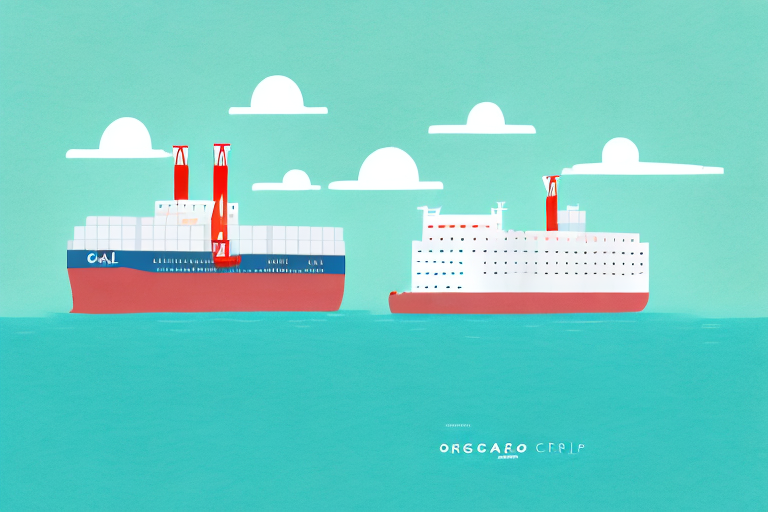Understanding GRI (General Rate Increase) in Shipping
If you are involved in the shipping industry, you may have come across the term "GRI" or General Rate Increase. GRI refers to an increase in freight rates that shipping lines implement across all their routes. These increases can range from a few percentage points to several hundred percent. Understanding GRI is essential for stakeholders to navigate the complexities of freight pricing and anticipate cost fluctuations.
Shipping lines implement GRI to boost their overall revenue, which can be influenced by various factors such as changes in fuel costs, currency fluctuations, or a shortage of shipping capacity due to increased demand. Notably, GRIs affect all routes uniformly, meaning even profitable routes are subject to rate adjustments.
It's important to note that GRI rates are not fixed and can vary based on the shipping line and prevailing market conditions. GRIs can be expressed as a percentage increase or a fixed amount per container. Additionally, the frequency of GRIs can differ, with some shipping lines implementing them monthly, quarterly, or annually. Staying informed about GRI announcements is crucial for shippers to manage their budgets effectively and avoid unexpected costs.
The Impact of GRI on the Shipping Industry
GRI has a multifaceted impact on the shipping industry:
- Increased Freight Costs: Businesses involved in shipping goods face higher freight rates, which can increase the overall cost of production and potentially lead to higher prices for consumers.
- Revenue for Shipping Lines: While GRIs can enhance revenue for shipping companies, they may also risk losing customers or market share if rates become uncompetitive.
- Market Competition: Adjustments in rates can lead to increased competition among shipping lines, offering customers more options but also challenging companies to differentiate themselves.
- Environmental Impact: Shipping lines may optimize routes and transportation methods to reduce costs, which can lead to decreased emissions. However, prioritizing cost savings over environmental concerns may negate these benefits.
According to the International Chamber of Shipping, fuel costs account for a significant portion of shipping expenses, making GRI a critical tool for managing operational costs.
Historical Context and Evolution of GRI
GRI is not a new phenomenon in the shipping industry. For decades, shipping lines have utilized GRIs to adjust freight rates in response to changing economic conditions. However, the frequency and magnitude of GRIs have increased in recent years due to heightened competition and rising operational costs.
The advancement of technology has also streamlined the implementation of GRIs. With sophisticated data analytics and automated systems, shipping lines can adjust rates more efficiently and in real-time, responding swiftly to market dynamics.
Despite its widespread use, GRI has been a topic of debate. Proponents argue that it is essential for maintaining profitability in a volatile market, while critics claim it leads to unfair price hikes. In response, some shipping lines have adopted more transparent and predictable pricing strategies, such as fixed-rate contracts, to build trust with their customers.
Looking ahead, the evolution of GRI is likely to continue as shipping lines leverage technology to develop more nuanced pricing models that consider real-time demand, supply chain disruptions, and sustainability initiatives.
Current Trends and the Future of GRI Shipping
The shipping industry is highly dynamic, and current trends reflect the ongoing adjustments to GRI practices:
- Frequent, Smaller Increases: Shipping lines are trendsetting towards implementing GRIs more frequently but with smaller rate adjustments to mitigate the shock to customers.
- Seasonal Adjustments: GRIs are increasingly being applied during peak shipping seasons or in response to unexpected events like natural disasters or pandemics, which impact shipping capacity.
- Technological Optimization: Investment in advanced analytics and machine learning enables shipping companies to optimize routes, reduce costs, and implement GRIs more strategically.
Future projections suggest that GRIs will continue to evolve with a stronger emphasis on sustainability. Shipping lines may develop pricing models that reward eco-friendly practices, aligning with global efforts to reduce carbon emissions.
According to a report by The Maritime Executive, the integration of green technologies and sustainable practices is becoming a significant factor in rate adjustments and overall shipping strategy.
Strategies and Best Practices to Mitigate GRI Impact on Your Business
While businesses cannot control GRI, they can adopt strategies to minimize its impact:
1. Negotiate with Carriers
Building strong relationships with carriers can lead to more favorable rate negotiations. Offering long-term commitments or increased shipping volumes may incentivize carriers to provide better rates despite GRIs.
2. Utilize Freight Forwarders
Freight forwarders can leverage their network and expertise to find competitive rates and negotiate on behalf of businesses, optimizing shipping costs effectively.
3. Implement Transportation Management Systems (TMS)
Technology such as TMS can help businesses optimize routes, track shipments in real-time, and identify cost-saving opportunities, thereby reducing the financial burden of GRIs.
4. Explore Alternative Transportation Modes
Considering alternative modes of transportation, such as rail or intermodal shipping, can offer cost-effective solutions that are less susceptible to GRIs.
5. Stay Informed and Plan Ahead
Keeping abreast of industry trends and GRI announcements enables businesses to anticipate rate changes and adjust their strategies accordingly. Developing contingency plans ensures readiness for unexpected rate hikes.
By implementing these strategies, businesses can effectively manage the financial impact of GRI and maintain a competitive edge in the shipping industry.
The Role of Technology in Managing GRI
Technology plays a pivotal role in managing the challenges posed by GRI:
1. Advanced Analytics and Machine Learning
Shipping companies use advanced analytics to assess shipping routes, weather patterns, and demand fluctuations. Machine learning algorithms can predict optimal routes and adjust strategies in real-time to minimize costs.
2. Transportation Management Systems (TMS)
TMS solutions help businesses automate and streamline their shipping processes, providing visibility into freight rates, carrier performance, and route optimization.
3. Real-Time Tracking and Monitoring
Real-time tracking tools allow businesses to monitor shipments, ensuring timely deliveries and reducing the likelihood of delays that can incur additional costs.
4. Blockchain Technology
Blockchain offers enhanced transparency and security in shipping transactions, enabling more efficient negotiations and contract management between shippers and carriers.
Embracing these technologies not only helps in mitigating the impact of GRI but also enhances overall operational efficiency.
For more insights on shipping technology, visit the ShipScience Blog.
Conclusion: Navigating GRI in the Shipping Industry
GRI shipping is a complex and evolving aspect of the maritime industry. By understanding the intricacies of GRI, its impact on the market, and implementing effective strategies, businesses can successfully navigate rate increases and maintain profitability.
Key takeaways include:
- Stay Informed: Keep up with GRI announcements and industry trends to anticipate and plan for rate changes.
- Build Strong Relationships: Foster good relationships with carriers and freight forwarders to negotiate better rates.
- Leverage Technology: Utilize advanced technologies to optimize shipping routes, reduce costs, and enhance operational efficiency.
- Diversify Transportation Modes: Explore alternative shipping methods to mitigate the impact of GRIs.
- Plan and Forecast: Implement robust budgeting and forecasting practices to prepare for potential rate increases.
By adopting these approaches, businesses can mitigate the adverse effects of GRI, ensuring sustained growth and competitiveness in the shipping industry.
For more information and expert insights, visit the ShipScience Resources page.






















